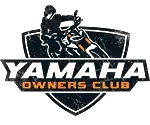-
Posts
9 -
Joined
-
Last visited
-
Days Won
1
Content Type
Profiles
Forums
Gallery
Events
Yamaha Racing News.
Media Demo
Store
Collections
Classifieds
Everything posted by Wooster
-
OK - apologies. I didn't realise.
-
I've the official Yamaha service manual - all 300+ pages of it. The diagram is in there. But I can't see how to attach it to this message. If you send me an email - I'll send it. startyourown at yahoo dot co dot uk Andrew
-
CDI's are fitted to most modern bikes. As far as I can tell, it's Yamaha who use TCI more than most. 'Digitally Controlled Ignition' is a phrase used to describe the multiple functions now handled by the ignition system. The 'DCI' will (still) use one of two systems to produce the pulse that is fed to the coils. 1) A capacitor charged up and discharged by a thryistor or 2) Microprocessor controlled Darlington transistors. These are the only two systems available. A lower resistance coil will charge up the capacitor more quickly or overload the Darlingrton's - depending on what system is used.
-
Perhaps that was the way RED ran it. I've posted many rubbish (1 star) reviews - British Gas, SSE, TalkTalk etc
-
After countless emails they refunded the purchase price and compensated me for some of the repair bill. (I'd contacted Trading Standards, Citizens Advice etc, etc.) They have since removed all 2 ohm coils from any Yamaha they've listed.
-
XV535 really rough/ bouncy ride - is this normal?
Wooster replied to BikerchickMT03's topic in The Bar
My wife had a 535 and ran it for 40k miles. (I did the maintenance.) This may not address your issues but 535s are critical of their head race bearings. Like any cruiser, the forks are long and angled forward. This put an exceptional load on the steering head race bearings. Only realised our 535 needed new bearings when the bike was raised to change the front tyre - you could feel the 'clunk' (in the straight ahead position) when the handle-bars were swung from side to side. Undetectable when the bike was on it's wheels. New bearings transformed the handling. -
I thought so. Trustpilot gives them a great score. motorcycleproducts.co.uk Yes, of course. But I didn't know about CDIs and TCIs - I was just buying coils. I had no idea there were two distinctly different types. I hope so. Is there a 'better' place on this website where it would be more prominent?
-
There are two different types of coils - those designed for a CDI (capacitor discharge ignition) and those for a TCI (transistor controlled ignition). A CDI isn't really bothered by the type of coil but a TCI is. If you use after-market coils designed for a CDI and you have a TCI - you will destroy the TCI. A simple check is to measure the primary coil resistance. About 2 ohm and it's made for a CDI. About 4 ohm and it's made for a TCI. Check your owners manual or the service manual to see what ignition you have. Lot's of Yamaha's use TCI. This comes from a bitter experience. I needed new coils for my wife's XVS250 and an after-market supplier sold coils with words on the website saying "These coils are compatible with your bike". Not knowing anything about CDIs or TCI's, I fitted them. They were 2 ohm and made for CDI, the bike has a TCI. About 200 miles later the bike suddenly stopped - no sparks. The only fix was a new (TCI) ignition module at vast expense. (And another set of - correct - coils, of course.) Be very, very careful about the coils you fit.
-
Hi - not sure is anyone is still reading this post any more but.... My wife has a 2004, XVS250. Everything points to the TCI not talking to the rear cylinder. However, the whole TCI is potted in a blue, rubberised potting compound. Does anyone have any idea how to remove the stuff?




